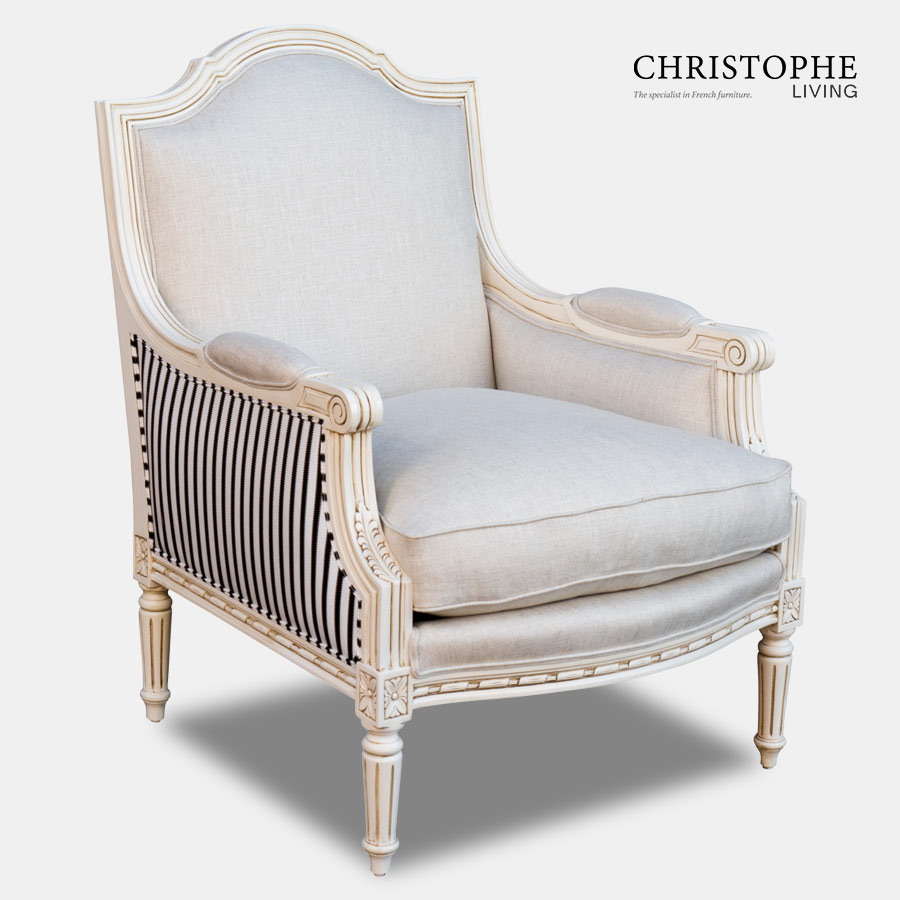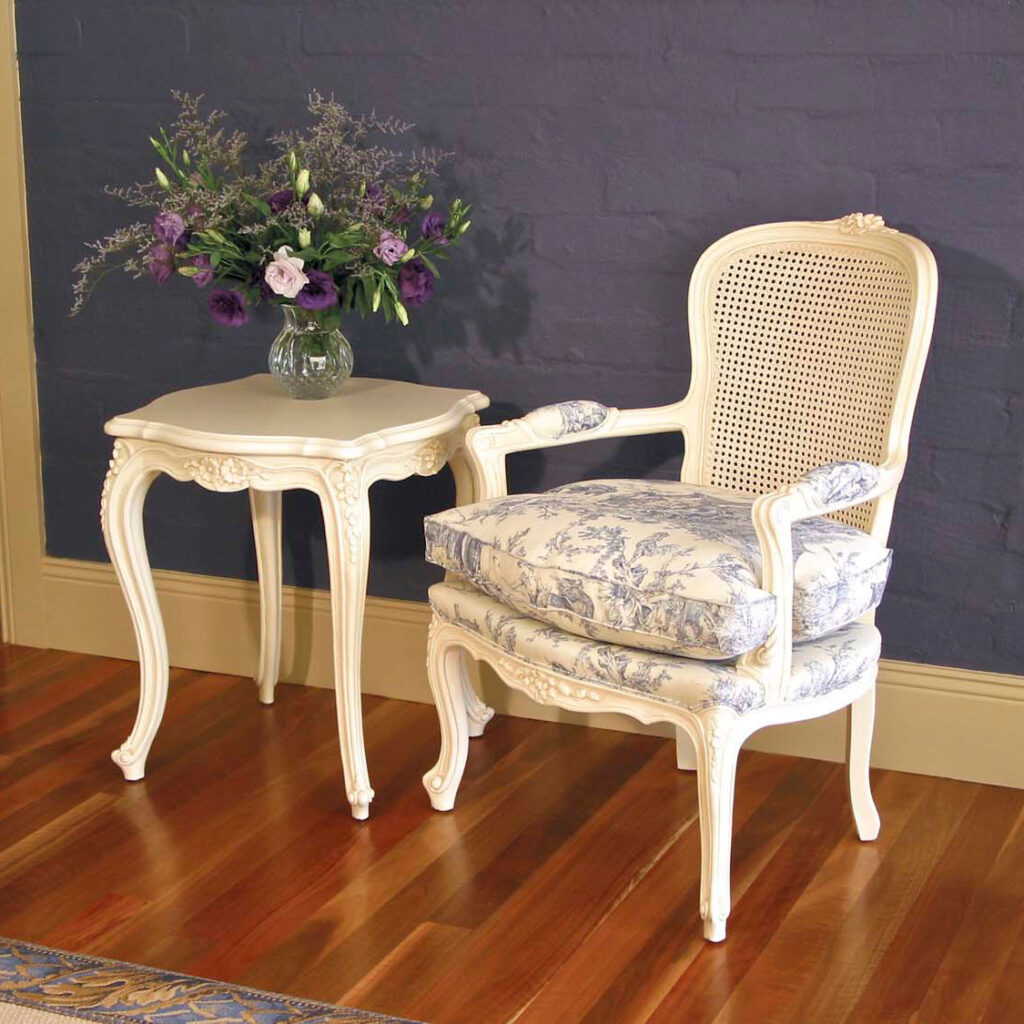History and Origins: White French Louis Chair

The White French Louis chair, a timeless piece of furniture, embodies the elegance and refinement of French design during the reign of Louis XIV, XV, and XVI. Its evolution, spanning centuries, reflects the changing tastes and styles of the French aristocracy and the broader European society.
Origins and Evolution
The White French Louis chair traces its roots to the early 17th century, when French furniture design began to break away from the heavy, ornate styles of the Renaissance. The reign of Louis XIV (1643-1715), known as the “Sun King,” marked a pivotal period in the development of French furniture. During this era, the French court became a center of artistic and cultural innovation, with a focus on grandeur and opulence.
- Louis XIV Style (1660-1715): Characterized by its imposing scale, rich materials, and intricate carvings, the Louis XIV chair typically featured a high back, a wide seat, and elaborate scrollwork. This style was heavily influenced by the classical architecture of ancient Rome and Greece, as well as by the opulent courtly life of the time.
- Louis XV Style (1715-1774): The Louis XV era brought a shift toward a more graceful and feminine style. Chairs became smaller and more delicate, with curved lines and elegant upholstery. The use of Rococo ornamentation, characterized by asymmetrical patterns and flowing curves, became increasingly popular.
- Louis XVI Style (1774-1793): The Louis XVI style, marked by a return to classical simplicity and order, featured chairs with straight lines, rectangular frames, and understated ornamentation. The emphasis was on functionality and elegance, reflecting the Neoclassical movement that was gaining popularity at the time.
Key Figures and Styles
The design of the White French Louis chair was influenced by several key figures and styles:
- André Charles Boulle (1642-1732): A renowned French cabinetmaker, Boulle was known for his intricate marquetry work, which used contrasting woods and materials to create elaborate patterns. His furniture, often adorned with brass or tortoiseshell inlays, became highly sought after by the French aristocracy.
- Charles Cressent (1685-1768): A prominent furniture maker during the Louis XV era, Cressent was known for his use of exotic woods, such as mahogany and rosewood, as well as his innovative designs. He also incorporated elements of Chinese and Japanese art into his work.
- Jean-Baptiste-Pierre Lebrun (1698-1781): A leading French sculptor and designer, Lebrun played a significant role in the development of the Louis XVI style. His designs emphasized classical simplicity and restraint, and his work influenced a generation of French furniture makers.
Cultural Significance
The White French Louis chair holds significant cultural significance, reflecting the values and aspirations of the French aristocracy and the broader European society. It was a symbol of status, wealth, and refinement, and it was often used in grand palaces, mansions, and aristocratic homes. The chair’s elegant design and luxurious materials were a testament to the craftsmanship and artistry of French furniture makers.
The White French Louis chair became an icon of French design and a symbol of the country’s cultural influence on Europe.
Design Characteristics

The White French Louis chair, a timeless piece of furniture, is renowned for its elegant design and meticulous craftsmanship. Its distinctive features, including its graceful silhouette, intricate carvings, and luxurious upholstery, have made it a coveted piece in both historical and contemporary interiors.
Upholstery
The upholstery of a White French Louis chair plays a pivotal role in its overall aesthetic. It is typically crafted from high-quality fabrics, often featuring rich colors and intricate patterns.
- Silk: A common choice for White French Louis chairs, silk adds a luxurious touch and drapes beautifully. It is often used in damask patterns, which feature intricate woven designs that create a subtle shimmer.
- Velvet: Known for its soft texture and opulent appearance, velvet is often used for White French Louis chairs, particularly in rich jewel tones like emerald green, sapphire blue, or ruby red.
- Brocade: A heavier fabric than silk, brocade is characterized by its raised, woven patterns. It adds a touch of grandeur and formality to the chair, often featuring floral motifs or geometric designs.
Carving and Gilding
Carving and gilding are integral to the aesthetic of the White French Louis chair, adding a touch of opulence and grandeur.
- Carving: The chair’s frame is often adorned with intricate carvings, typically depicting floral motifs, scrolls, and other decorative elements. These carvings are often executed in a style known as “rococo,” which is characterized by its asymmetry and playful curves.
- Gilding: The carved elements of the chair are often gilded, meaning they are coated with a thin layer of gold leaf. This process adds a shimmering, luminous quality to the chair, enhancing its elegance and sophistication.
Variations and Styles

The White French Louis chair, a timeless piece of furniture, has evolved through various styles and variations over centuries. These variations, often reflecting the prevailing artistic and cultural trends of their time, showcase the chair’s adaptability and enduring appeal. This section delves into the distinctive characteristics of these styles, highlighting their evolution and impact on the design of the White French Louis chair.
Variations in Design and Style
The White French Louis chair, despite its name, is not confined to a single style. Its evolution encompasses various design elements, each contributing to the chair’s unique identity. Key variations include the Louis XIV, Louis XV, and Louis XVI styles, each representing a distinct period in French history and design.
- Louis XIV Style (1643-1715): This style, often associated with the reign of Louis XIV, embodies grandeur and formality. The chairs feature a high back, ornate carvings, and elaborate upholstery. The frame is typically crafted from walnut or oak, with a strong emphasis on symmetry and geometric patterns. The use of gilt, intricate tapestries, and luxurious fabrics further accentuates the opulence of this style.
- Louis XV Style (1715-1774): This style, emerging during the reign of Louis XV, transitioned from the rigid formality of the Louis XIV era to a more graceful and flowing aesthetic. The chairs are characterized by curved lines, cabriole legs, and elaborate floral motifs. The emphasis shifts towards comfort and elegance, with the use of lighter woods like mahogany and the incorporation of softer upholstery materials like velvet and silk.
- Louis XVI Style (1774-1793): The Louis XVI style, influenced by the Neoclassical movement, represents a return to simpler, more restrained designs. The chairs are characterized by straight lines, slender legs, and understated ornamentation. The use of light-colored woods like beech and birch, combined with delicate upholstery fabrics like linen and cotton, emphasizes a sense of elegance and sophistication.
Key Features of Each Style, White french louis chair
The following table summarizes the key features of each White French Louis chair style, highlighting their distinct characteristics:
| Style | Historical Period | Key Features |
|---|---|---|
| Louis XIV | 1643-1715 | High back, ornate carvings, elaborate upholstery, walnut or oak frame, symmetry, geometric patterns, gilt, tapestries, luxurious fabrics. |
| Louis XV | 1715-1774 | Curved lines, cabriole legs, elaborate floral motifs, mahogany frame, softer upholstery materials (velvet, silk). |
| Louis XVI | 1774-1793 | Straight lines, slender legs, understated ornamentation, beech or birch frame, delicate upholstery fabrics (linen, cotton). |
The white French Louis chair, with its elegant curves and intricate carvings, embodies classic sophistication. While often associated with adult spaces, the design’s charm can be adapted for children. For a touch of regal whimsy, consider incorporating a childrens sofa and chair set in a complementary style.
This creates a cozy reading nook or play area, allowing children to enjoy the comfort and beauty of a classic design while fostering their imagination.
While the white French Louis chair exudes a classic elegance, a modern take on seating can be found in the modern white vanity chair. This contemporary design often features clean lines and minimalist aesthetics, offering a sleek and functional addition to any space.
Similarly, the white French Louis chair, with its intricate carvings and graceful curves, remains a timeless symbol of sophistication and refinement.
